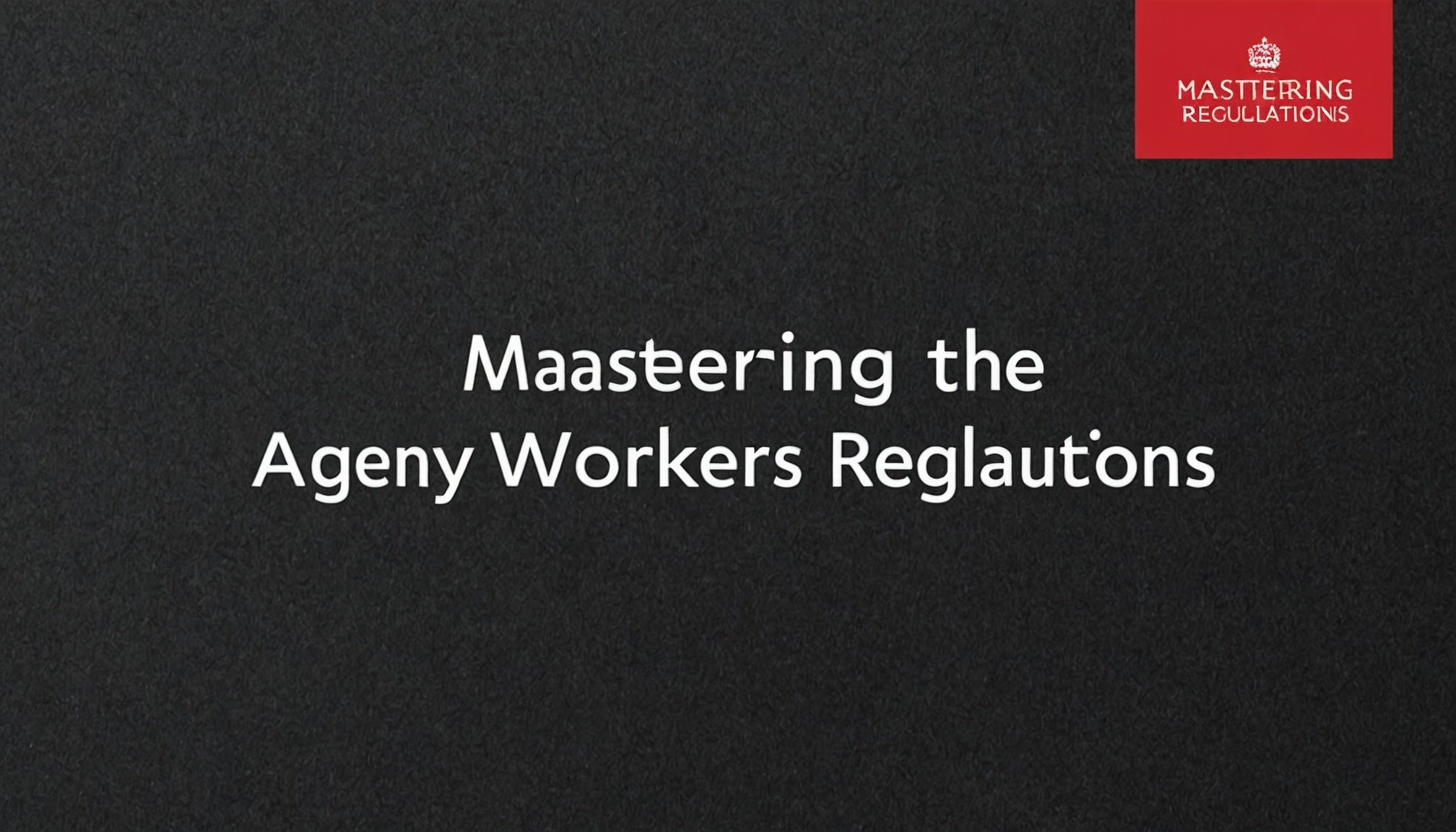Mastering the Agency Workers Regulations 2010: A Comprehensive Guide for UK Employers
Managing temporary staff can be a complex and daunting task, especially with the myriad of regulations in place to protect the rights of agency workers. The Agency Workers Regulations 2010 (AWR) is a crucial piece of legislation that aims to ensure fair treatment and equal rights for agency workers in the UK. Here’s a detailed guide to help you navigate these regulations and successfully manage your temporary staff.
Understanding the Agency Workers Regulations 2010
The AWR came into effect on October 1, 2011, and is designed to give agency workers the same basic working and employment conditions as if they were directly employed by the hirer after a qualifying period. This qualifying period is 12 weeks, during which the worker must be working in the same role with the same hirer.
Topic to read : Empowering yourself against workplace bullying and harassment: a comprehensive legal guide for uk employees
Key Principles of AWR
- Equal Treatment: After the qualifying period, agency workers are entitled to the same basic working and employment conditions as permanent employees.
- Qualifying Period: The 12-week period during which the agency worker must work in the same role with the same hirer to qualify for equal treatment.
- Basic Working and Employment Conditions: This includes pay, working hours, rest periods, annual leave, and access to collective facilities and amenities.
The Qualifying Period: What You Need to Know
The qualifying period is a critical aspect of the AWR. Here are some key points to consider:
Calculating the Qualifying Period
- The 12-week period does not have to be continuous; it can be broken up over several assignments with the same hirer.
- Any weeks where the worker is absent due to illness, maternity leave, or annual leave still count towards the qualifying period.
- If the worker is assigned to a different role with the same hirer, the qualifying period may reset.
Example Scenario
Suppose an agency worker, John, is assigned to a hirer for 10 weeks, then takes a 2-week break before returning to the same hirer for another 4 weeks. In this case, John would have completed the 12-week qualifying period and would be entitled to equal treatment.
Additional reading : Mastering global software development: essential strategies for safeguarding your intellectual property rights
Pay and Working Conditions
After the qualifying period, agency workers must receive the same pay and working conditions as directly employed staff.
Basic Pay
- Agency workers must receive the same basic pay as permanent employees doing the same job.
- This includes any bonuses or allowances that are directly related to the job.
Working Hours and Rest Periods
- Agency workers are entitled to the same working hours and rest periods as permanent employees.
- This includes the right to the same number of hours of work, breaks, and time off.
Annual Leave
- Agency workers accrue annual leave in the same way as permanent employees.
- They are entitled to a minimum of 28 days of paid annual leave per year, which includes bank holidays.
Recruitment and Retention Strategies
Managing agency workers effectively involves more than just complying with regulations; it also requires strategic recruitment and retention practices.
Building Strong Relationships
- Foster good relationships with your agency workers by providing clear communication and feedback.
- Recognize and reward their performance to boost morale and retention.
Training and Development
- Offer training and development opportunities to help agency workers enhance their skills and performance.
- This can include on-the-job training, workshops, or even sponsoring courses relevant to their role.
Flexible Working Arrangements
- Provide flexible working arrangements where possible, such as flexible hours or remote work options.
- This can be particularly appealing to agency workers who may have other commitments or responsibilities.
Employment Conditions and Terms
Understanding the employment conditions and terms is crucial for both hirers and agency workers.
Terms and Conditions
- Ensure that the terms and conditions of employment are clearly outlined in the contract.
- This includes details about pay, working hours, leave entitlements, and any other benefits.
Service Agreements
- Have a service agreement in place with the recruitment agency that outlines the responsibilities of both parties.
- This agreement should cover aspects such as the recruitment process, payment terms, and the handling of any disputes.
Practical Advice for Hirers
Here are some practical tips for hirers to ensure compliance with the AWR and to manage agency workers effectively:
Keep Accurate Records
- Maintain detailed records of the agency worker’s assignments, including dates, hours worked, and any breaks taken.
- This will help in calculating the qualifying period accurately.
Communicate Clearly
- Ensure that agency workers are informed about their rights and entitlements under the AWR.
- Provide clear communication about their role, responsibilities, and any changes to their assignment.
Treat Agency Workers Fairly
- Treat agency workers with the same respect and fairness as permanent employees.
- Include them in team meetings, training sessions, and social events to foster a sense of belonging.
Table: Comparing Agency Workers and Permanent Employees
| Aspect | Agency Workers (After Qualifying Period) | Permanent Employees |
|---|---|---|
| Basic Pay | Same as permanent employees | Standard pay |
| Working Hours | Same as permanent employees | Standard working hours |
| Rest Periods | Same as permanent employees | Standard rest periods |
| Annual Leave | Minimum 28 days per year | Minimum 28 days per year |
| Access to Facilities | Same as permanent employees | Standard access |
| Bonuses and Allowances | Same as permanent employees | Standard bonuses and allowances |
Quotes and Insights
- “The key to managing agency workers effectively is to treat them with the same respect and fairness as your permanent staff. This includes clear communication, fair treatment, and opportunities for development,” says Jane Smith, HR Manager at XYZ Corporation.
- “Compliance with the AWR is not just about avoiding legal issues; it’s about creating a positive and inclusive work environment where all employees feel valued,” notes John Doe, Employment Law Specialist.
Mastering the Agency Workers Regulations 2010 is essential for any UK employer who uses temporary staff. By understanding the qualifying period, ensuring equal treatment in pay and working conditions, and implementing effective recruitment and retention strategies, you can create a harmonious and productive work environment. Remember, compliance is not just a legal necessity but also a way to build strong relationships with your agency workers, which can lead to better performance and higher retention rates.
Checklist for Hirers
- Qualifying Period: Ensure accurate tracking of the 12-week qualifying period.
- Pay and Working Conditions: Provide equal pay and working conditions after the qualifying period.
- Annual Leave: Accrue and provide annual leave entitlements.
- Training and Development: Offer opportunities for skill enhancement.
- Flexible Working: Provide flexible working arrangements where possible.
- Clear Communication: Inform agency workers about their rights and entitlements.
- Fair Treatment: Treat agency workers with the same respect as permanent employees.
By following these guidelines and tips, you can ensure that your agency workers are well-managed, motivated, and integrated into your team, ultimately contributing to the success of your organization.











